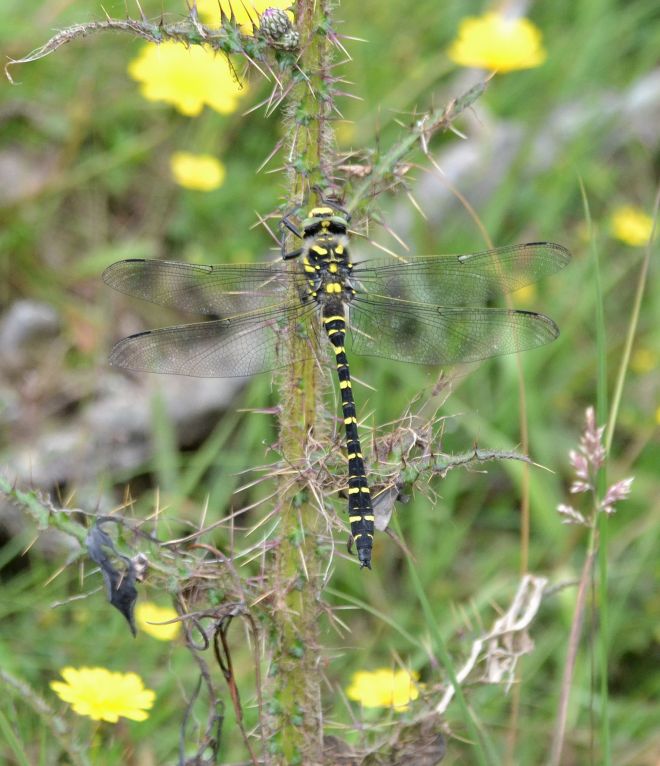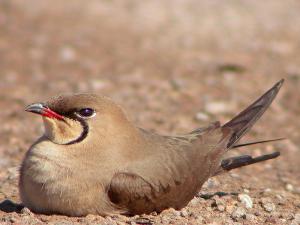This was a season’s first visit to the English Odonata mecca of the New Forest. My quest was to acquire better images of Common Goldenring, in my view the most magnificent home dragonfly. My issue with this species is that in the past I have mostly captured them against over-busy backgrounds. Where insect picture taking is concerned my desire is always to cut out the clutter as much as possible.
A year ago (see here) I identified this site as one where that aim might be attainable if a little time is devoted to the task. On Sunday the weather forecast was for sustained sunshine after a cloudy start and hence it was game on, or so I thought. Upon arriving on site around 11am conditions were still steadfastly overcast, and thus largely it remained for the next five hours. But it still didn’t take long to come across Goldenrings as I walked east from Ogdens Forestry Commission car park at SU182124.

Common Goldenring (male)
This individual, a male (pictured above) was the first one encountered, and soon it settled against a colour co-ordinated if still cluttered backdrop. Goldenrings, of which there are eight variants across Europe, follow a fairly predictable routine of patrolling the same patch up and down and over again. After re-finding one spot that on the previous visit had struck me as being especially photogenic but which somehow didn’t grab me now, I retraced my steps and came across another Goldenring doing exactly what I have described above.
Feeling a little weary in spirit, I sat and watched this second male for some time, noting the locations where habitually he would come to rest. Insect watching should be about relaxing in remote places in communion with complex and fascinating joys of nature with the capacity to cleanse the system, just the dragonflies or butterflies and myself. Instead it more often involves the frustration of waiting for the sun to come out, then too limited intervals in which to record the renewing experience for posterity. Eventually my Goldenring perched perfectly right in front of me (below left). This was more like it.
The twig in the right hand picture (above) was another favoured stopping place, and so it went on. This is the first time in 2016 that I have converted an objective on the limited insect agenda set for this season, and that’s all due to poor weather. Better or any pictures of Hairy Hawker, Downy Emerald, Common Clubtail, and teneral or female Blue Chaser will all now have to wait until 2017; not to mention White Admiral butterflies.
Another speciality at Latchmore Brook is Scarce Blue-tailed Damselfly that I observed for the first time in this place a year ago (see also here). The lowland mire in which they occur, to the immediate north of the brook, was in excellent health today with a fascinating array of bog plants of which I have no knowledge. In mid-afternoon I returned to the car for a power nap then changed into wellies to seek out this species for a second time. The best part of an hour was then spent waiting for an approaching patch of blue sky to cover the key position.
As soon as the sun broke through, SBTD took to the wing, but these are very tricky little insects to capture. They have a finer more delicate appearance than regular Blue-tailed Damselfy and a knack of vanishing from view as imperceptibly as they appear in the first place. But once the three or four individuals encountered here settled the diagnostics of a blue tail band covering part of segment 8 and all of 9, and with a convex upper edge, were plain to behold (pictured above).
I have long since realised that much of the better odonata photography published on-line must be obtained by wading in. But usually I am far too squeamish about treading habitat to get really close to some insects. This particular bog is churned up by free ranging cattle and ponies anyway, and so I felt less guilt at doing what after all odo royalty does. The results were a little better than last year and I resolved to try again.
That opportunity wasn’t long in coming round since following a conversation with Adam we decided to go down together a few days later. He needed SBTD for his odonata life list and I would be able to take him to the right spot to find them. Avoiding the year’s hottest day we opted for Wednesday that in the event wasn’t much cooler. This time we found just one male (pictured above) that struck up some nice poses against reasonably subtle backgrounds. In retrospect Sunday’s capture of a female wasn’t that bad but these are better since they do not involve brown bog water and over-reflection.
In the afternoon we trekked across country, and for some of the way off-piste across Hampton Ridge and through the eastern edge of Pitts Wood Inclosure to Ashley Hole, and then back again. After a very wet summer up until this week lots of superb lowland mire habitat was encountered along our route with many odo-rich pools. But observing these beautiful insects is doomed to become repetitive in this country. If only there were more species to experience, though at least one rather special damselfly has been done justice now.
























